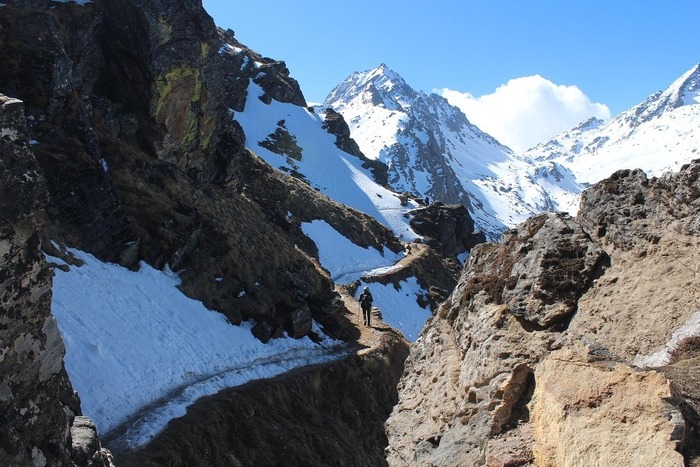Study shows that the melting was more pronounced in the Eastern Himalayan region compared to the central and western regions of Himalayas
A new study suggested that the increase in black carbon emissions has accelerated the melting process in the Himalayas by 4°C over the past two decades, with high concentrations seen in Eastern and Central Himalayas. Black carbon is a fine particulate matter produced by the incomplete burning of fossil fuels, biofuels, and biomass.
The study by Climate Trends titled “Impact of Black Carbon on Himalayan Glaciers: A 23-Year Trends Analysis” showed that the black carbon concentration in the region rose significantly from 2009 to 2019. The analysis showed that the levels saw relative stabilisation between 2019 and 2023, suggesting a possible plateau in emissions or a change in atmospheric conditions.
Rising temperature and glacier melting
According to the report, the average snow surface temperature in the Himalayan snow peaks by 4°C over the last two decades, from an average of -11.27°C to -7.13°C representing an overall average temperature increase of -8.57°C. Areas with higher black carbon deposition have higher snow surface temperature and lesser snow depth. The research revealed that black carbon particles darkened snow surfaces, lowering their reflectivity, which made them absorb heat at a much faster level.
“Glacier melt is accelerating and threatening fresh water resources to nearly two billion people downstream and the major sources contributing to black carbon include biomass combustion, fossil fuel use, and open burning, particularly in the Indo-Gangetic plan (IGP), which acts as a hotspot for emissions,” said Palak Baliyan, lead author of the study in a statement.
Eastern Himalaya showed the highest level of black carbon emissions due to its proximity to densely populated and biomass burning regions followed by the Central and Western Himalayas.
Dr. Farooq Azam, Senior Cryosphere Specialist of International Centre for Integrated Mountain Development said, “Climate change is unequivocally affecting glacier dynamics and water availability, with each passing year setting new global temperature records since 2015. The repercussions extend beyond environmental change, altering river patterns and the seasonal availability of water.”
About The Author
You may also like
Rise in Fossil Fuel Burning is Making Floods Lethal in Asia
Heatwaves Drove 9% of India’s Power Demand in the Summer of 2024
World Off-Track on Climate Goals as Temperatures are Predicted to Rise: Report
A Fifth of Migratory Species Face Extinction from Climate Change: Report
Climate change, unplanned construction and a malfunctioning dam can worsen the flooding in north Bengal

